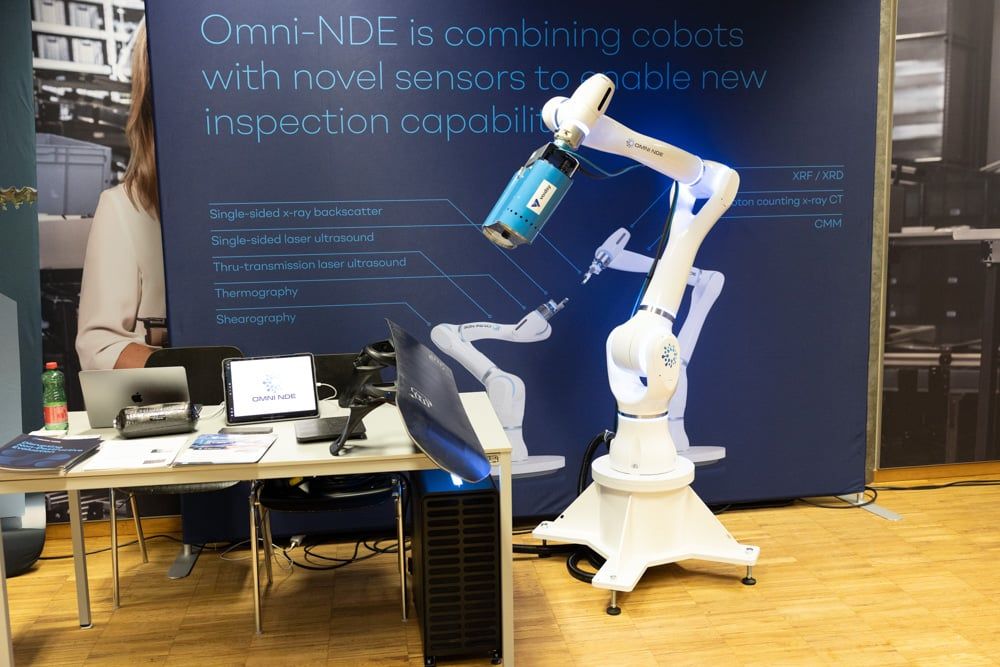
ICT Conference at Wels, Austria
Our CTO James Bennet represented Omni NDE at the 13th Conference on Industrial Computed Tomography (ICT) in Wels, Austria (Feb. 6-9, 2024). During that conference, we continued to show and develop our system capabilities, including integration of thermography (at right, top) and CT (bottom). We are always looking for new and innovative sensors to integrate into our system.
Continuing System Development
Omni NDE continues to develop and refine our system capabilities. We currently have 3D surface mapping, a variety of modes using X-ray/CT, and Laser UT sensor suites integrated into the cobot arms. All of these enable multiple modes of non-contact inspection. The data sets from these multiple modalities can be integrated via our unique software to provide a new level of part inspection and analysis. Our software also enables 3D path planning with or without a CAD file, which significantly reduces the workload for scanning new samples — e.g., hours, not days or weeks. A result of this approach is that we enable not only comparison of the NDT data to a CAD model, but the development and storage of an NDT digital twin of the part — something that is being demanded in the industry but has yet to be fully realized. We’re working to push this forward.
Paper Published
Dr. James Bennet, CTO and founder of Omni NDE, has collaborated on the paper, “Multi-modal imaging and non-destructive evaluation of a carbon fiber overwrapped pressure vessel (COPV)” published in conjunction with the ICT 2024 conference. The paper presents inspection results on a 1200 cubic centimeter, 350 bar Type 3 pressure vessel. The team inspected the COPV — which had a known debond between the CFRP overwrap and aluminum liner — with X-ray microcomputed tomography (XCT), laser UT (LUT), infrared thermography (IRT), and digital shearography (DS).
The results using active IRT and DS show clear indications of the debond initially identified by XCT. Since 100% use of XCT may not be feasible for a given production line, analysis with alternative NDT methods is key to compare the defect detectability performance. The LUT results provided additional confirmation of the debond regions. For more details of the scanning parameters and results, read this paper on our website.
Sample Scans
We continue to scan samples from various aerospace and space companies, using multiple modalities to showcase which techniques and/or combinations produce the best results for each customer and each application. These scans have included materials being developed for high temperature, low weight applications, such as ceramic matrix composites (CMC) including carbon-carbon samples. With these samples, we have been able to show defects and voids that were previously not able to be detected without destructive methods. These results have also included large and complex shaped composites that are difficult or impossible to scan effectively using traditional methods.
Have a part you want us to scan? Contact: info@omni-nde.com



